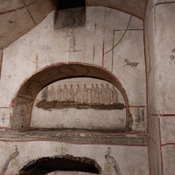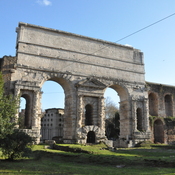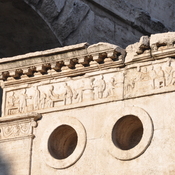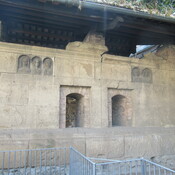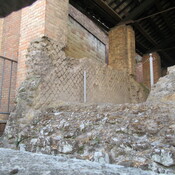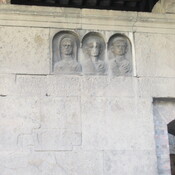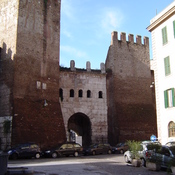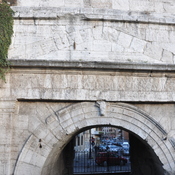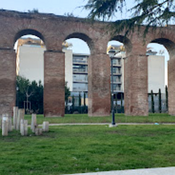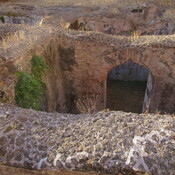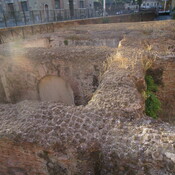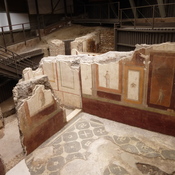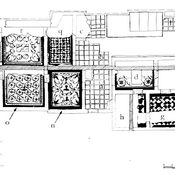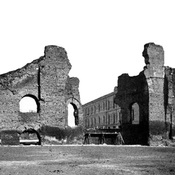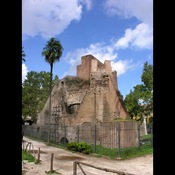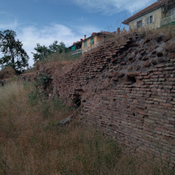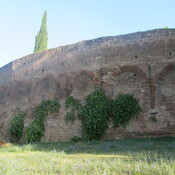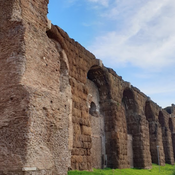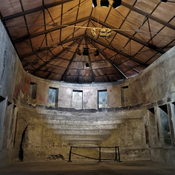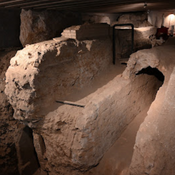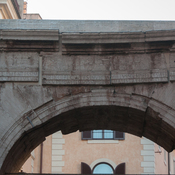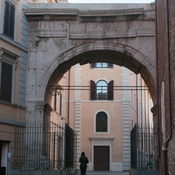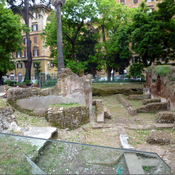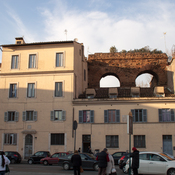Het gebouw werd rond 300 n.Chr. gebouwd. De functie is onduidelijk. Aan het begin van de 17e eeuw werd in de directe omgeving een antiek beeld van Athena Giustiniani (De Romeinse godin Minerva was gelijkgesteld aan de Griekse godin Athena) aangetroffen en men ging er van uit dat dit dan ook de tempel voor Minerva was. Dit gebouw is echter geen tempel, maar een nymphaeum of een paviljoen. Waarschijnlijk maakte het deel uit van het villacomplex in de tuinen van de Licinii-familie. De echte Tempel van Minerva Medica stond een paar honderd meter westelijker.
Het gebouw bestaat uit een 24 meter brede tienhoekige hal met een 33 meter hoge koepel. Tegen de muren zijn negen nissen gebouwd (de tiende muur is de ingang), waarvan die op de as van het gebouw uitlopen in een open boog, die toegang gaf tot de halfronde bijgebouwen, die aan de linker- en rechterzijde stonden. De koepel was op dezelfde wijze als bij het Pantheon gebouwd, met een oculus om gewicht te besparen. De koepel bleef tot 1828 grotendeels intact, maar stortte toen in.
In twee nissen werden de gebroken beelden aangetroffen van twee hoge keizerlijke ambtenaren uit de 5e eeuw. 1
Bronverwijzingen
- ↑Wikipedia: Tempel van Minerva Medica (Horti Liciniani)
The building was built around 300 AD. The function is unclear. At the beginning of the 17th century an antique statue of Athena Giustiniani (The Roman goddess Minerva was equated with the Greek goddess Athena) was found in the immediate vicinity and it was assumed that this was also the temple for Minerva. However, this building is not a temple, but a nymphaeum or a pavilion. It was probably part of the villa complex in the gardens of the Licinii family. The real Temple of Minerva Medica was a few hundred meters to the west.
The building consists of a 24-meter wide ten-sided hall with a 33-meter high dome. Nine niches have been built against the walls (the tenth wall is the entrance), from which they open onto the axis of the building in an open arch, giving access to the semicircular outbuildings, which stood on the left- and right-hand sides. The dome was built in the same way as the Pantheon, with an oculus to save weight. The dome remained largely intact until 1828, but then collapsed.
In two niches, the broken images of two high-ranking imperial officials from the 5th century were found.



